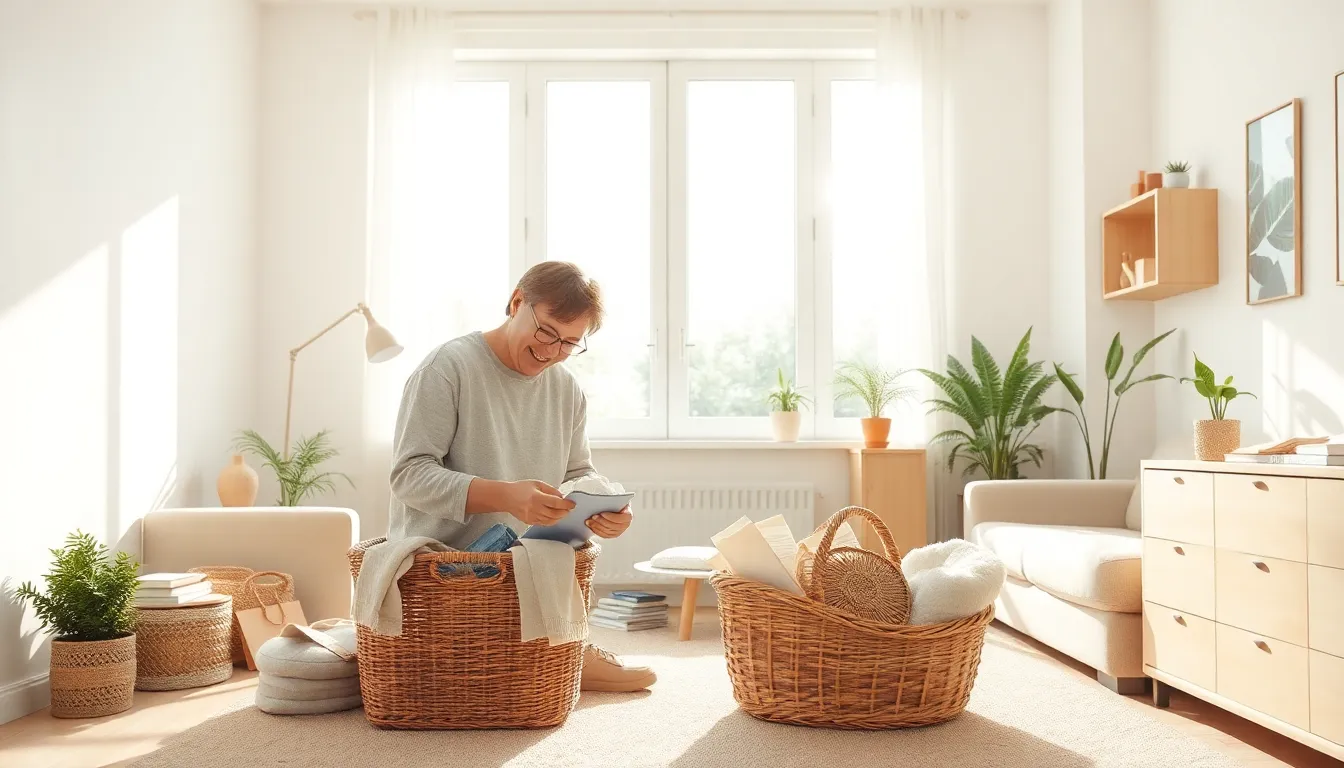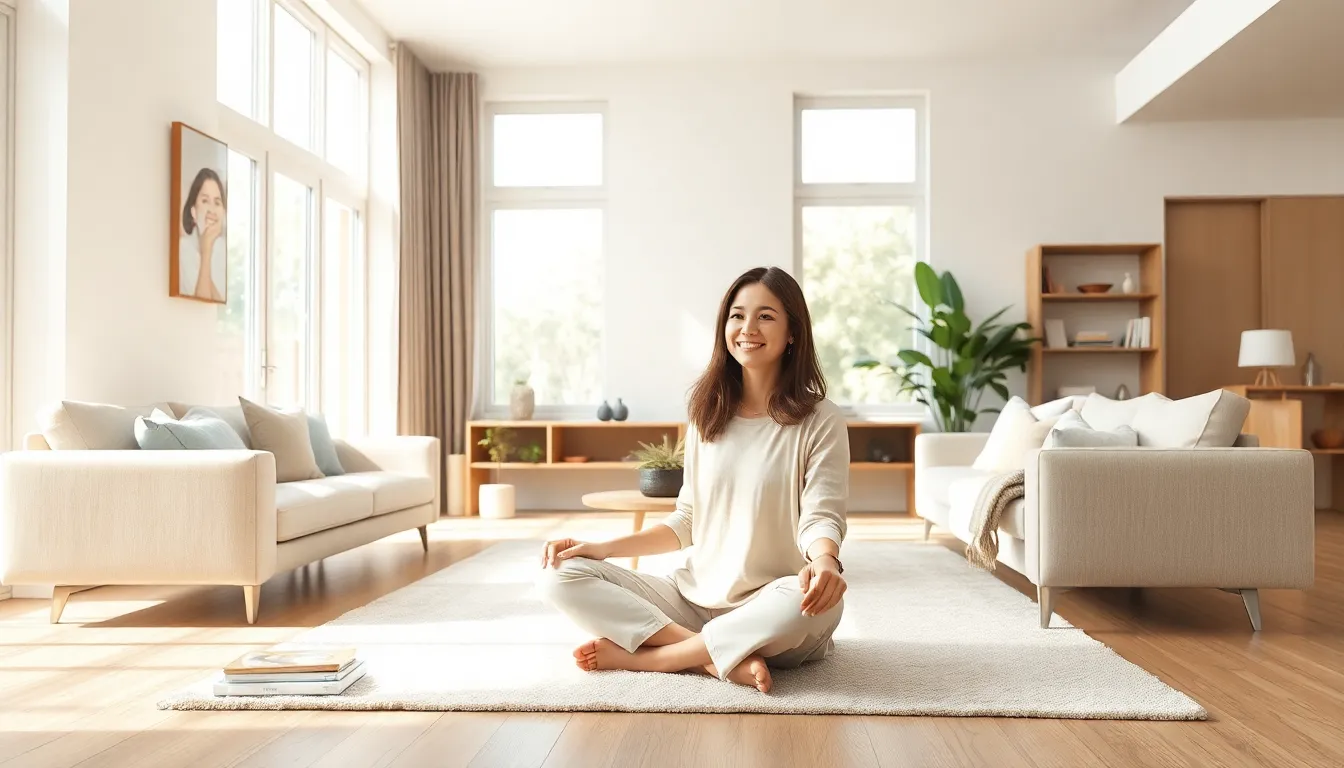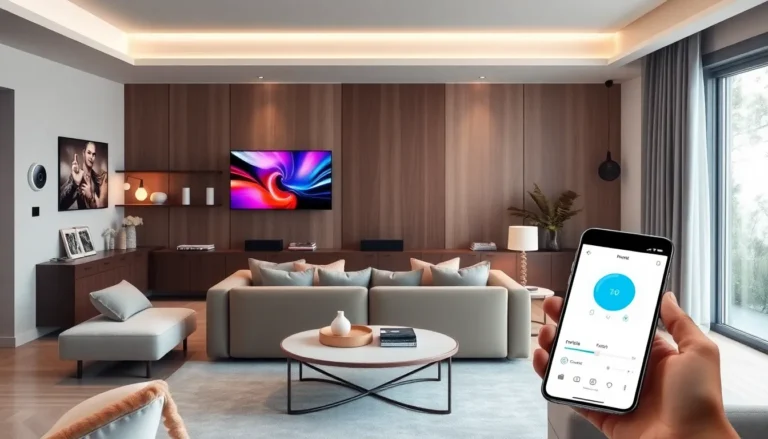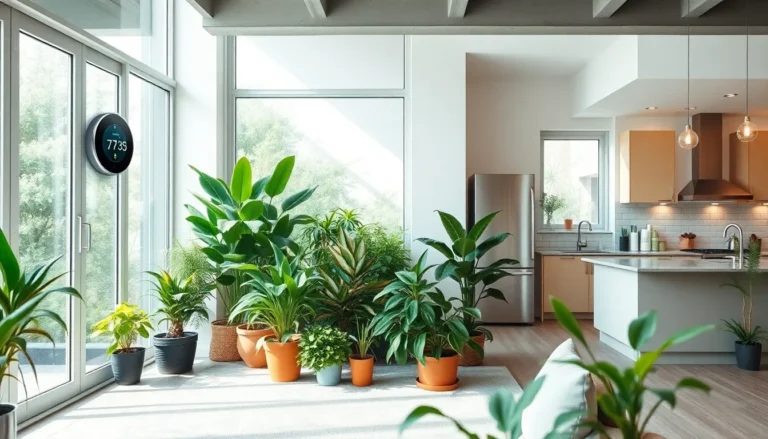Table of Contents
ToggleIn a world overflowing with stuff, embracing minimalist living might just be the ultimate life hack. Imagine waking up in a space that feels more like a serene retreat than a cluttered battlefield. It’s not just about tossing out the old pizza boxes and that questionable collection of ceramic frogs; it’s about reclaiming your time, energy, and sanity.
Understanding Minimalist Living
Minimalist living focuses on simplifying one’s life by embracing only what truly matters. This lifestyle fosters clarity and intentionality in daily decisions.
Definition of Minimalism
Minimalism centers on reducing excess, whether it’s physical possessions or mental distractions. It encourages an individual to prioritize meaningful experiences over material goods. By defining what is essential, people can cultivate a more tranquil environment. Clarity finds its roots in intentional choices, making each item in one’s life purposeful.
Benefits of Minimalist Living
Minimalist living significantly reduces stress associated with clutter. A simplified environment often leads to improved mental well-being. Prioritizing essential items enhances focus on what truly matters. Moreover, individuals frequently find more time to engage in fulfilling activities. Financial benefits emerge through decreased spending on non-essential items, promoting healthier financial habits. Ultimately, this lifestyle leads to a sense of freedom and control, allowing individuals to live more authentically.
Practical Minimalist Living Tips

Practical steps enhance the journey toward minimalist living. Implementing these strategies can simplify life and create a serene environment.
Decluttering Your Space
Start with one area to avoid feeling overwhelmed. Remove items that no longer serve a purpose or bring joy. Assess each possession and consider its value in daily life. Keeping spaces uncluttered promotes a calm atmosphere. Allocate specific times for regular decluttering sessions; consistency helps maintain an organized environment. Set goals for donating or recycling to benefit others while clearing personal space.
The One In, One Out Rule
Adopt the one in, one out rule to maintain balance. Upon acquiring a new item, commit to removing an existing one. This practice prevents unnecessary accumulation of belongings. Encourage mindful purchasing; think of each item’s impact before bringing it home. Consider how this rule applies not only to physical possessions but also to mental clutter and commitments. Following this guideline fosters intentional living and curbs impulsive behaviors.
Simplifying Your Wardrobe
Eliminate clothing that hasn’t been worn in over a year. Favor versatile pieces that can be mixed and matched for various occasions. Curate a capsule wardrobe based on favorite styles and comfort. Evaluate the quality of garments; investing in durable items pays off in the long run. Arrange clothing in a way that showcases favorite pieces, making it easier to choose outfits. Simplifying wardrobes fosters confidence and reduces daily decision fatigue.
Mindset Shifts for Minimalism
Minimalist living requires specific mindset shifts. Adopting these perspectives helps individuals cultivate a meaningful, simplified lifestyle.
Embracing Less
Embracing less means understanding the value of quality over quantity. Individuals often find freedom when they release attachments to material possessions. Letting go of items that don’t serve a purpose fosters clarity. By prioritizing what truly matters, individuals create space for essential aspects of life. Simplifying surroundings encourages focus on the present. Shifting attention from consumer culture allows for greater appreciation of simplicity. For many, this transition leads to reduced anxiety and enhanced well-being.
Focusing on Experiences Over Things
Focusing on experiences over things transforms daily living. Prioritizing moments and memories cultivates deeper connections with loved ones. Engaging in activities that promote joy often brings more satisfaction than acquiring new items. Experiences enrich lives in ways that possessions cannot. By directing resources toward adventures, individuals often find fulfillment in shared memories rather than clutter. This approach encourages people to evaluate what adds value to their lives. Ultimately, valuing experiences fosters a sense of community and happiness.
Creating a Minimalist Home
Creating a minimalist home enhances tranquility and promotes intentional living. This space prioritizes functionality and simplicity.
Functional Furniture Choices
Selecting the right furniture plays a crucial role in minimalist living. Opt for multifunctional pieces, such as a sofa bed or an expandable dining table. These options maximize space and cater to various needs. Consider sleek, clean lines that contribute to an open atmosphere. Choosing neutral colors creates a calming backdrop, allowing for flexibility in décor. Prioritizing quality over quantity ensures durability without overwhelming one’s space. Incorporate furniture that seamlessly blends style and utility to maintain a harmonious environment.
Organizing with Purpose
Organizing with purpose helps maintain a clutter-free space. Start by categorizing items, grouping similar belongings together. Use clear storage bins to easily access frequently used items without visual chaos. Each item should have a designated place, minimizing the chances of clutter reaccumulating. Establishing a functional system simplifies maintaining order and clarity in everyday routines. Regularly assess belongings, removing items that no longer serve a purpose. This ongoing process fosters a peaceful, minimalist home that supports intentional living.
Minimalism in Daily Life
Minimalism influences daily routines by promoting conscious choices in how time and resources are utilized. This lifestyle encourages individuals to seek simplicity in various aspects of their lives.
Time Management Tips
Effective time management embodies minimalism by eliminating distractions and focusing on meaningful tasks. Prioritizing essential functions supports productivity. Scheduling specific time blocks for work, relaxation, and self-care creates balance. Declining non-essential commitments allows more time for activities that enhance well-being. Utilizing tools, such as to-do lists or digital planners, streamlines daily responsibilities.
Mindful Consumption
Mindful consumption emphasizes thoughtful purchasing decisions. Individuals are encouraged to assess the true value of items before acquiring them. Focusing on quality over quantity leads to longer-lasting satisfaction. Reading reviews and evaluating needs before buying reduces impulse purchases. Reflecting on purchases ensures alignment with personal values and lifestyle goals, reinforcing intentional living.
Embracing minimalist living can transform one’s life by fostering clarity and peace amidst the chaos of modern existence. By prioritizing what truly matters and reducing excess, individuals can enhance their mental well-being and reclaim precious time. The journey toward minimalism encourages intentionality in both possessions and experiences, leading to a more fulfilling lifestyle.
Implementing practical tips like decluttering and mindful consumption can make the transition smoother. Ultimately, minimalism is about creating a serene environment that supports personal growth and happiness. By adopting this lifestyle, individuals not only simplify their surroundings but also enrich their lives with meaningful experiences and connections.







